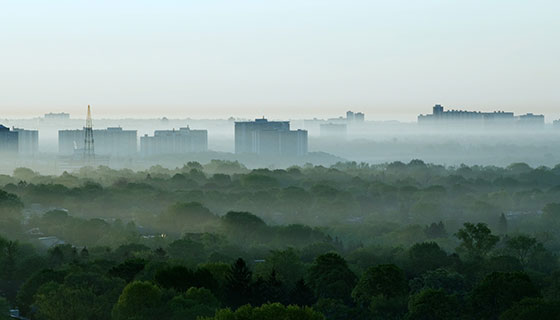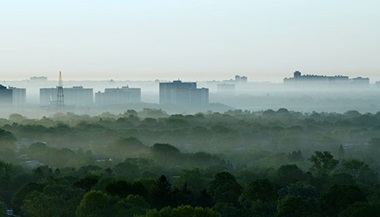Pneumoconiosis
Pneumoconiosis is one of a group of interstitial lung disease caused by breathing in certain kinds of dust particles that damage your lungs.
Because you are likely to encounter these dusts only in the workplace, pneumoconiosis is called an occupational lung disease.
Pneumoconiosis usually take years to develop. Because your lungs can't get rid of all these dust particles, they cause inflammation in your lungs that can eventually lead to scar tissue.
Types of pneumoconiosis
The disease appears in different forms, depending on the type of dust you inhale. One of the most common forms is black lung disease, also known as miner's lung. It’s caused by breathing in coal dust. Another is brown lung, which comes from working around dust from cotton or other fibers. Other types of dusts that can cause pneumoconiosis include silica and asbestos. Diacetyl, the compound used to give movie popcorn its buttery flavor, also can lead to the disease. This is known as popcorn lung.
Pneumoconiosis can be simple or complicated. Simple pneumoconiosis causes a small amount of scar tissue. The tissue may appear on an X-ray as round, thickened areas called nodules. This type of the disease is sometimes called coal worker pneumoconiosis, or CWP. Complicated pneumoconiosis is known as progressive massive fibrosis, or PMF. Fibrosis means that a lot of scarring is present in the lungs.
For either simple or complicated pneumoconiosis, the damage causes the loss of blood vessels and air sacs in your lungs. The tissues that surround your air sacs and air passages become thick and stiff from scarring. Breathing becomes increasingly difficult. This condition is called interstitial lung disease.
Symptoms
Symptoms of pneumoconiosis often depend on how severe the disease is. Simple CWP may have no or few symptoms and show up only on an X-ray. PMF may cause mild to severe difficulty breathing. Symptoms may include:
-
Cough
-
Lots of phlegm
-
Shortness of breath
Who's at risk
Being exposed to dust that can cause pneumoconiosis, in an everyday setting, is not enough to cause the disease. But you could be at risk if you've worked around or directly with these dusts. Studies show that about 16 percent of American coal miners may eventually develop interstitial fibrosis from coal dust. Other dust exposures that may put you at risk include working with asbestos fibers or silica dust. Your risk may also be increased by:
-
Smoking
-
Being exposed to a high level of dust
-
Being exposed for a long time
Diagnosis
You may be diagnosed with pneumoconiosis if you have lung symptoms, X-ray abnormalities, and a history of working around coal, asbestos, or silica. You may also be diagnosed by having a routine X-ray during the time you are employed. The Federal Mine Safety and Health Acts require that all underground coal miners be offered a chest X-ray after three years and then at five-year intervals to look for the disease. Your doctor may use any of these to help make a diagnosis:
-
Personal history of work exposure
-
Physical examination
-
Chest X-ray or CT scan to look for lung nodules, masses and interstitial disease
-
CT scan of the chest
-
Pulmonary function studies, including blood gasses
-
Biopsy
Treatment
Pneumoconiosis can’t be cured. Once the disease has been diagnosed, treatment is aimed at keeping it from getting worse and controlling your symptoms. A treatment plan may include:
-
Not smoking
-
Avoiding all dust exposure
-
Using oxygen
-
Taking medications called bronchodilators that open lung passages
Complications
The main complication is when simple pneumoconiosis progresses to PMF. These are other possible complications:
-
Progressive respiratory failure
-
Lung cancer
-
Tuberculosis (but this is now rare)
-
Heart failure caused by pressure inside the lungs
Prevention
Prevention is important because the disease cannot be treated or reversed. The Occupational Safety and Health Administration sets standard prevention rules for workers at risk for pneumoconiosis. These are common prevention measures:
-
Wearing a mask
-
Washing areas of skin that come in contact with dust
-
Safe removal of dust from clothing
-
Washing your face and hands thoroughly before eating, drinking, or taking any medications
-
Not smoking
-
Letting your doctor and your employer know about any symptoms of pneumoconiosis
-
Getting regular chest X-rays and physical exams
When to call the doctor
Call your doctor if you have shortness of breath, a persistent cough, or a cough that produces lots of phlegm.
Living with pneumoconiosis
Pneumoconiosis is a chronic, long-term, lung disease. Learn as much as you can about your illness and work closely with your medical team. Consider these tips to better manage your health:
-
Get a flu shot every year to help protect your lungs and ask your doctor about getting the pneumonia vaccine.
-
Stop smoking and avoid secondhand smoke.
-
Ask your doctor if a pulmonary rehabilitation program could help you.
-
Try to get regular exercise and plenty of sleep.
-
Eat a well-balanced diet. Try frequent, smaller meals if a full stomach makes it harder to breathe.
-
Struggling to breathe can make you feel anxious and stressed. Talk about your feelings and seek help from a mental health professional if necessary.
-
Consider joining a support group. The American Lung Association has Better Breathers Clubs all around the country that can help.




